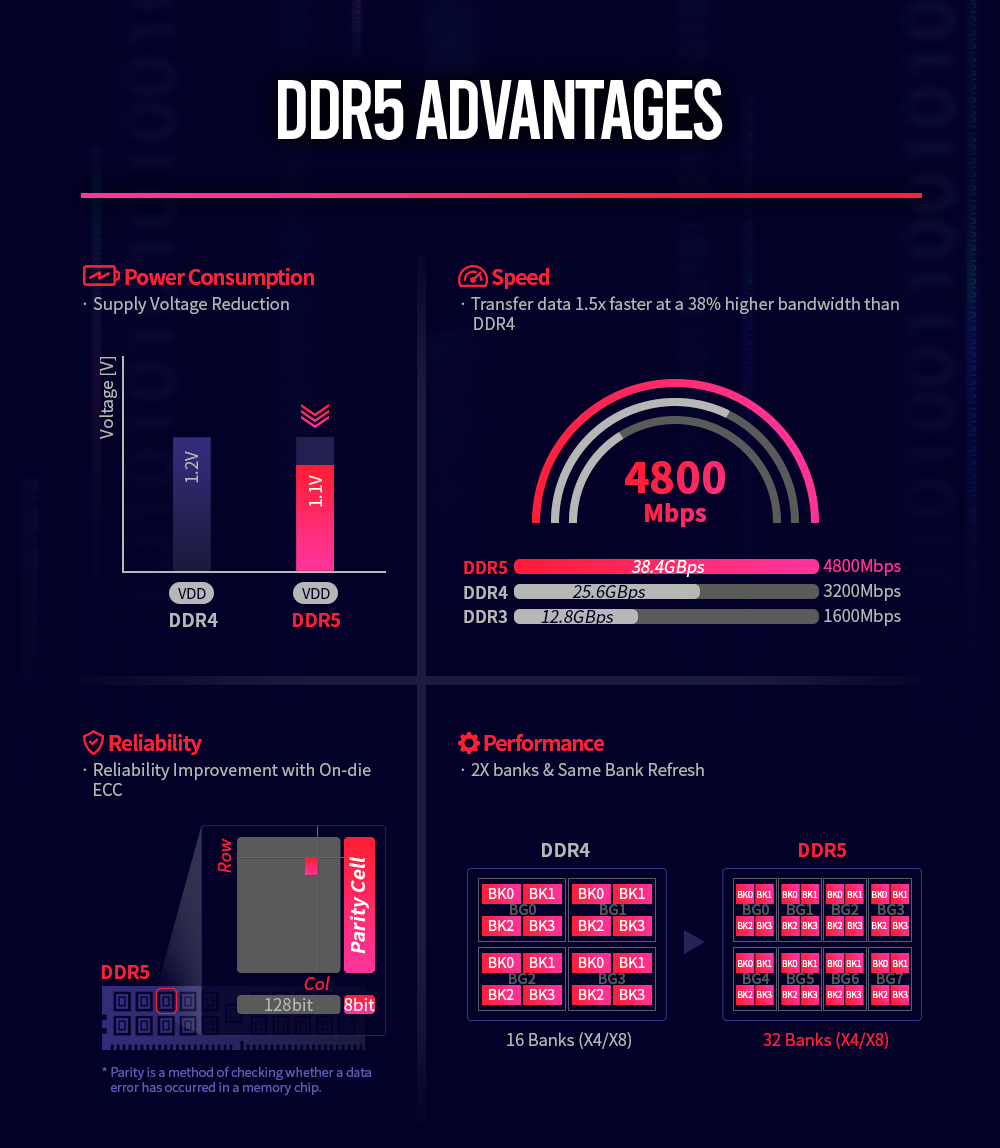
SK Hynix has finally shown off their new DDR5 memory module, and the latest chips will be mass produced this year. Back in 2014, we all made the switch to DDR4, and finally six years later, we’re switching to DDR5. Gradually, all memory suppliers will make the switch to DDR5 hopefully starting by the end of this year, or maybe a full fledged launch next year.

DDR5 Features:
Frequencies:
While average DDR4 modules are JEDEC (Joint Electron Device Engineering Council) certified DDR4-3200(3200MHz), and currently top out at 5000MHz as shown by G.Skill, the new DDR5 modules as seen in the chart above, will be averaging 4800MHz, and can be clocked at a staggering 8400MHz!
Sizes:
DDR4 has a max density of 16Gb per DIMM, but the new DDR5 ram modules use a density of 64Gb, which translates to 64 GB DDR5 memory capacity on a single DIMM. There are also 24, 32, and 48GB capacities on a single module which will be available shortly.
Banks:
Features for doubling performance include banks. DDR5 uses double the bank size from 16 to 32 banks, to increase the bandwidth, and also the burst length is expanded to 16 from 8 in DDR4. A new feature of DDR5 allows the system to access other banks while those banks are operating at the same time, known as “Same Bank Refresh”. DDR4 lacks this feature, and will be a huge improvement for DDR5.
Power Efficiency:
DDR4 uses an operating voltage of 1.2v at stock. DDR5 improves on that, and uses a lower voltage at 1.1v which gives a 20% reduction in power consumption. It also has a peak-to-peak voltage(VPP) of 1.8v which gives an even better reduction in power consumption.
ECC and ECS:
This new feature of DDR5 called on-die ECC(Error Correction Code) and ECS(Error Check and Scrub) is a feature that servers require a lot, and thus an upgrade will be beneficial to them.

“In the 4th Industrial Revolution, which is represented by 5G, autonomous vehicle, AI, augmented reality (AR), virtual reality (VR), big data, and other applications, DDR5 DRAM can be utilized for next-gen high performance computing (HPC) and AI-based data analysis,” – Sungsoo Ryu, SK Hynix’s Head of DRAM Product Planning
He also declared that
“DDR5 will also offer a wider range of density based on 16Gb and even 24Gb monolithic die, in order to meet the needs of cloud service customers. By supporting higher density and performance scalability compared to its predecessor, DDR5 has set a firm foothold to lead the era of big data and AI.”
Trendforce, an industry market research firm predicts the semiconductor market recovering steadily with AI, and 5G IoT(Internet of Things), 5G automotive technologies, helping double the demand. Even though it’s too early to tell the differences between DDR5 and DDR4, they will eventually get noticed by customers in the market in 2020.IDC(International Data Corporaton) another firm expects the demand of DDR5 to rise from 25% in 2021 to 44% in 2022. It’s predicted that AMD’s Zen4 server CPUs “Epyc” Genoa and Intel’s Sapphire and Granite Rapids would be releasing with the all new DDR5 DIMMs in 2021-22.

